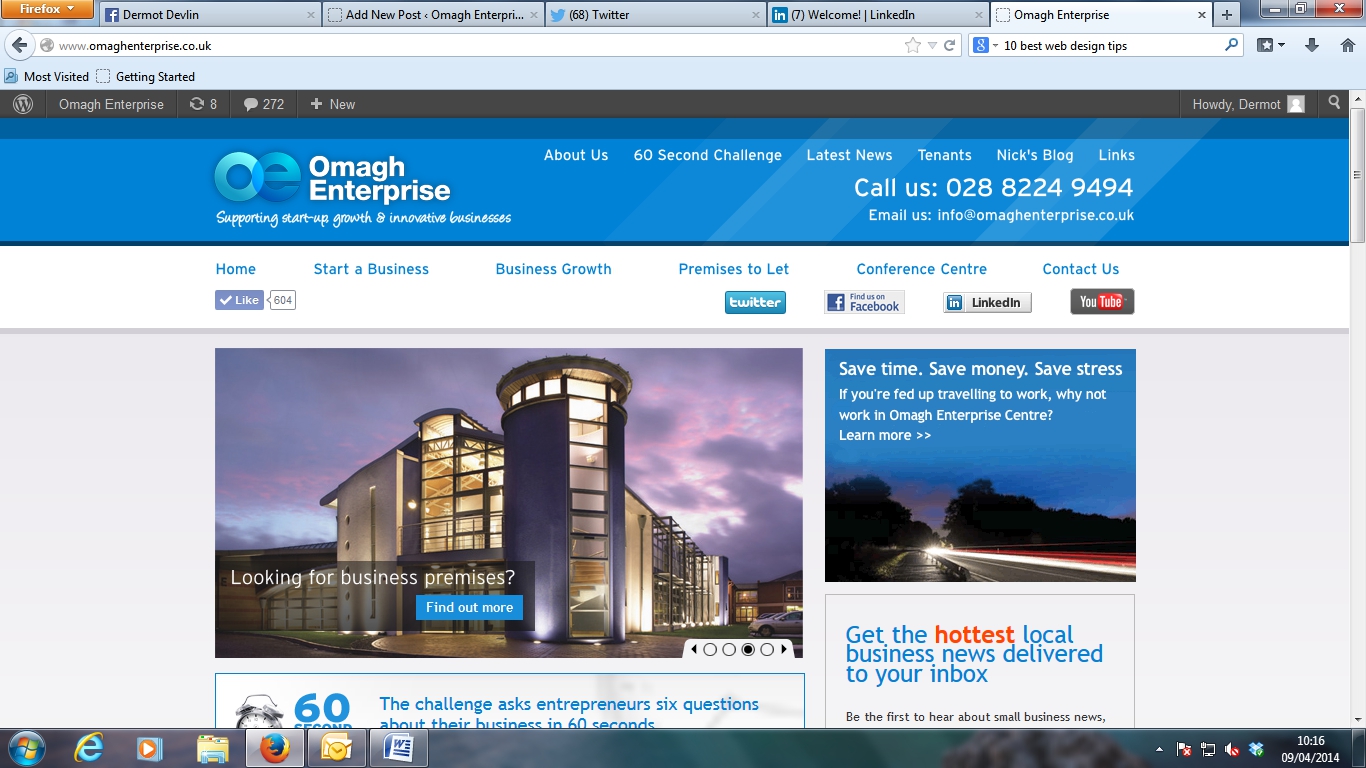Top Ten Tips for Website Design
Designing a useful and professional website for your business isn’t difficult. Anyone who uses the internet daily knows what characteristics they like in a website. Your favorite sites are typically easy to navigate and offer the information, products or services you desire in a quick and easy-to-find manner. Here are a few website design tips for creating a professional website with website builder software.
1. Keep it simple.
This is the number one rule of any design, whether you work in digital or print media. There’s no need for extra bells and whistles on a website. They don’t attract more traffic and they don’t help your bottom line. Don’t include flashing animations, auto-loading sounds or scrolling text. All you need are crisp photos or images and simple text that are well balanced on each page, with a few hyperlinks and a few buttons to navigate to other pages on your website.
2. Don’t bury the main point.
Put the most important information on your homepage and secondary information only a click away. That is, don’t bury information three or four clicks from the homepage. If it has to be that far from the homepage, it isn’t important. Eliminate it.
3. Working with images.
Make sure your image file sizes are small so that they load seamlessly and your page appears instantly. There’s only one thing more annoying than waiting for a page to load, and that’s a pop-up window.
4. While we’re on the subject, no pop-up windows.
People don’t like to have their web-viewing experience interrupted by pop-up windows – especially ads.
5. Color schemes.
Choose a color scheme with three mild colors for your webpages. One should be your background. Light blue and beige work well. Use one or two other colors for link buttons, your header and other design elements.
These colors should match and never overpower or obscure your text. The color of your text should, in almost all cases, be black. However, text can be white with a dark background, which is often called reverse text. Avoid colored texts such as red, yellow, purple and others. However, the color of hyperlink text should be blue.
6. Fonts.
Choose a font that’s simple and easy on the eyes. The following fonts typically work well for websites: Arial, Georgia, Helvetica, Verdana and Times New Roman.
7. Pages.
Limit your page length to just one page scroll. Blogs and articles can be longer, but no one likes to scroll down a page too far to find the information they want.
8. Homepage links.
Include a home button on every page. This way, your visitors won’t need to click the back button on their browsers ten times to get to your homepage.
9. Contact links.
Put a contact link on every page. It can be frustrating to search for contact information and not find it. Keep yours in plain sight on all pages to make it as easy for your visitors to find. After all, you do want to be contacted.
10. Don’t use icon links.
That is, every link should be a text link, including the buttons at the top of a page. It’s okay to have a rectangular button, or other button shapes, but they should have a word on top of them, such as “contact,” “home,” “purchase” and so forth.
Follow these tips and your business website will be easy to maneuver and user friendly for all your visitors. It will be a useful tool for you to attract new customers and build brand awareness. The best website builder software can help achieve these goals.
Source: toptenreviews.com




